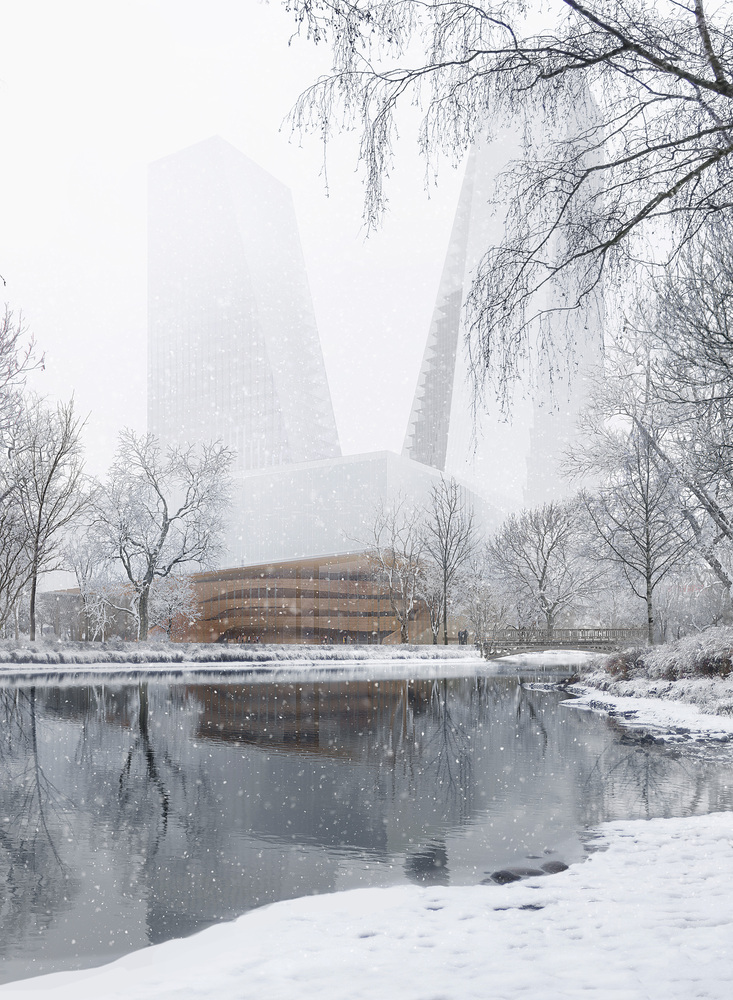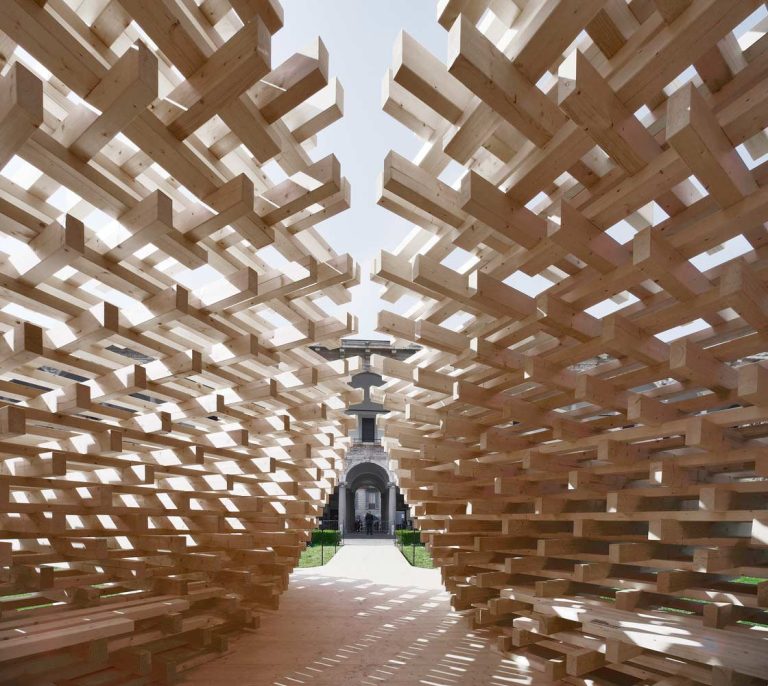
Architecture is a performance, an expression composed to elevate and enhance the drama it portrays. Duett Düsseldorf stands strikingly tall as two iconic towers – dancing. Designed by Snøhetta, the world-class opera house exposes a lavish and inviting setting. A generous public roof garden steps upon its podium, capturing magnificent views all around. The vision of Duett Düsseldorf promises to bestow the German city a new cultural epicenter.
Learn more about parametric and computational design from pioneers at the CD NEXT conference series:

In the beginning, CENTRUM GROUP commissioned Snøhetta to propose the new opera house and vision it to become a cultural beacon for the city. As concepts poured and building rose, Duett Düsseldorf soared to weave rich connections to the nearby Hofgarten park, the Rhein river, and the Königsallee street, triggering to ensemble a space to bring people together. The design comprises a state-of-the-art opera house, a hotel, restaurants and cafes, office spaces, and residential units, structuring an initiative of a shared communal center for the people of Düsseldorf.

The new opera replaces Heinrich-Heine-Allee 16A with additional expansions and programs while minimizing the ground level and employing functions, spaces, and volumes to stack up vertically. Upon entry, a composition of salubrious curves garnishes a warm welcome. Bridging from the lush, historic Hofgarten park, the landscape design envelopes the opera house, channeling people’s flow and orientation through an urban forest stumbling into the opera foyer. The curved landscape restructures the road systems and reinforces links to Königsallee through a new bridge connecting to the south and west.

As you stroll towards the foyer, the boundaries blur between indoors and outdoors, seamlessly weaving a unified expression. Trudging along the clearly defined granite stoned carpet, a 16-meter-tall transparent glass facade reveals a mesmerizing sculptural wood wall within the foyer. Over hanged balconies extend out from the circular core, and the organically molded wall weaves a spatial phenomenon transitioning from a vertical wall to a horizontal sky. From the forest-like entrance of the park, through the transparent glass shell, the meeting with the wooden core forms an intimately warm, soothing welcome to the opera house.

As people come together and unite by these large spaces, from there like a rising high pitched note, forays generous staircases and ramps leading from the foyer up to a café on the fourth floor. Lavish staircases and ramps lead from the foyer up to a café on the fourth floor of the building. The initial three floors adapt to horizontal cantilevering volume topping off the foyer and main stage below. From the North-West section, you can glimpse the magnificent views of the surrounding area.

From the café, visitors can gaze into the opera rehearsal spaces, choir and orchestra rehearsal rooms. A large ballet rehearsal space on the east wing of the horizontal volume encompasses over two floors, infusing natural light conditions and a great sense of space. They also induce a sense of security and privacy by being placed on the higher floors. When appropriate, the rehearsal spaces can expand to inculcate a large audience group for performances.

Wardrobes and small exercise spaces also align along the horizontal volume, while spacious cargo lifts connect to storage rooms, the orchestra pit and the back-of-house areas. We can also find the administration and the opera canteen on the fourth and fifth floor. The horizontal facade represents a significant architectural element with approximately 25,000 square meters of mixed-use opera and hotel functions, along with public access. The design echoes to build relationships and synergies between inhabitants, visitors, guests, employees and artists, also embellishing as an element binding the park, the Rhine and the sky.
From the horizontal planes, and the elevated V-shaped towering marvel, silhouetting the sky, ensemble to compose a new perspective, constantly creating an expression reminiscent of a dancing duet. Snøhetta strategically designed the towers to reduce the shading of surrounding areas, while also invoking better daylight conditions in the courtyard.

Snøhetta programmed the towers primarily for the hotel, residential areas, and office spaces. The design focuses on fashioning clear divisions between the functions and thus providing structural protection from unpredictable weather. A layered glass facade with different scaling and transparency imbues a character that reflects its context. Contrasting an opaquer outward-facing tower facade, the inward-facing facades mostly self-shade and allow for high-level lucidity and interaction with the public on the roofscape.
Snøhetta intuitively set the multi-layered Duett Düsseldorf to fashion a cultural hub and public lure, further building on Düsseldorf’s image as a pivotal centre for arts and culture.
Project Details:
Location: Düsseldorf, Germany
Client: CENTRUM GROUP
Size: 163.111 m2
Typology: Opera house, residential, hotel, office, commercial
Collaborators: Bollinger+Grohmann, Theatre Project, Drees & Sommer



















































